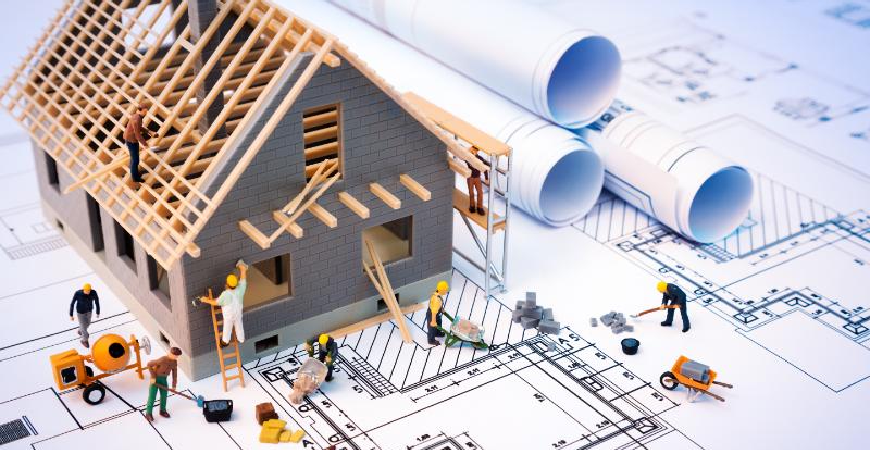
The Home Building Timeline Explained: What to Expect and When | Livnext Home Construction
Building a home is an exciting yet complex process that requires careful planning and coordination. Understanding the home building timeline can help you set realistic expectations and ensure a smoother construction experience. Here’s a detailed overview of what to expect and when during the home building process:
1. Pre-Construction Phase (1-6 Months)
Define Your Goals and Budget: Start by determining your vision for the home, including size, style, and features. Establish a realistic budget that includes construction costs, permits, and any additional expenses.
Choose a Location: Select the right plot of land based on your lifestyle needs, access to amenities, and zoning regulations.
Design and Planning: Work with an architect or designer to create a floor plan and design that suits your needs. This includes selecting materials, finishes, and layout.
Obtain Permits: Apply for the necessary building permits and approvals from local authorities. This process can take several weeks to months, depending on the jurisdiction and project scope.
Finalize Contracts: Choose a builder and finalize contracts that outline the scope of work, payment schedules, and timelines.
2. Site Preparation (1-2 Months)
Clearing the Land: The construction site will be cleared of trees, rocks, and debris to prepare for building.
Excavation: The foundation area is excavated, and grading is done to ensure proper drainage.
Utility Connections: Arrange for utility services such as water, electricity, and sewer lines to be brought to the site.
3. Foundation Phase (1 Month)
Laying the Foundation: The foundation is poured, whether it's a slab, crawl space, or basement. This process includes framing the footings and allowing time for the concrete to cure properly.
Inspections: After the foundation is laid, inspections are typically required to ensure compliance with building codes.
4. Framing Phase (1-2 Months)
Structural Framework: The framing of the house begins, including walls, floors, and roof structures. This phase defines the shape and layout of your home.
Window and Door Installation: Openings for windows and doors are framed out, and this is also when the roof structure is put in place.
5. Exterior Work (1-2 Months)
Roofing and Siding: Roofing materials are installed, followed by exterior siding or finishes, which protect the home from the elements.
Installation of Windows and Doors: Windows and doors are installed to secure the building envelope.
6. Rough-In Phase (1-2 Months)
Electrical and Plumbing: Rough plumbing and electrical wiring are installed. This includes running pipes and electrical lines throughout the house.
HVAC Installation: Heating, ventilation, and air conditioning (HVAC) systems are set up to ensure comfort in the home.
7. Interior Work (2-4 Months)
Insulation: Insulation is installed in walls and ceilings to improve energy efficiency.
Drywall Installation: Drywall is hung, taped, and finished to create interior walls.
Painting and Flooring: Once the drywall is complete, interior painting can begin, followed by the installation of flooring materials like tile, hardwood, or carpet.
8. Finishing Touches (1-2 Months)
Cabinetry and Fixtures: Cabinets, countertops, and bathroom fixtures are installed, adding functionality and style to the home.
Final Electrical and Plumbing: Final touches on electrical fixtures, outlets, and plumbing fixtures are completed.
Trimming and Molding: Baseboards, crown molding, and other trim work are installed to enhance the home’s aesthetic appeal.
9. Final Inspection and Punch List (1 Month)
Final Inspection: The home is inspected by local authorities to ensure it meets all building codes and regulations.
Punch List: A punch list is created, detailing any minor repairs or adjustments needed before closing. This is the final step before you take possession of your new home.
10. Closing and Move-In (1 Month)
Final Walkthrough: Before closing, conduct a final walkthrough with the builder to ensure all work is completed to your satisfaction.
Closing Process: Sign all necessary documents and finalize your mortgage or financing.
Move-In: Once everything is finalized, you can move into your new home and start enjoying your new space!
Conclusion
The home building process can take anywhere from several months to over a year, depending on various factors such as project complexity, weather conditions, and availability of materials and labor. By understanding the timeline and stages involved, you can better prepare for the journey ahead and make informed decisions throughout the construction process. Open communication with your builder and staying organized will help ensure a successful and rewarding home-building experience.